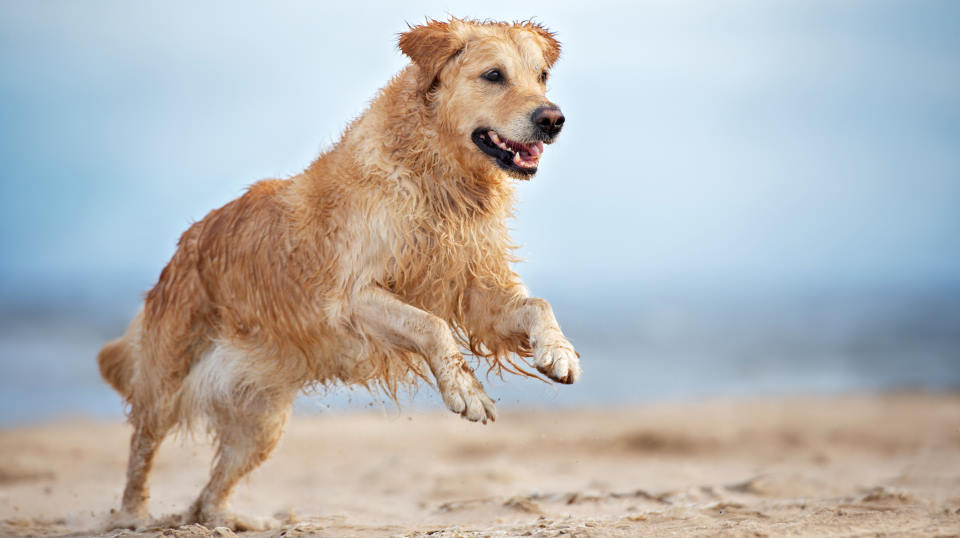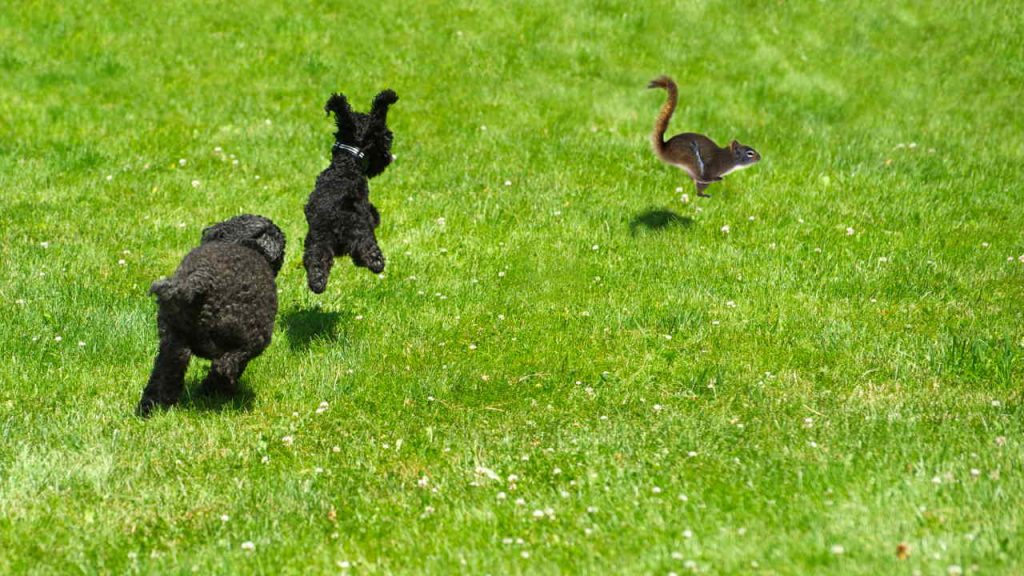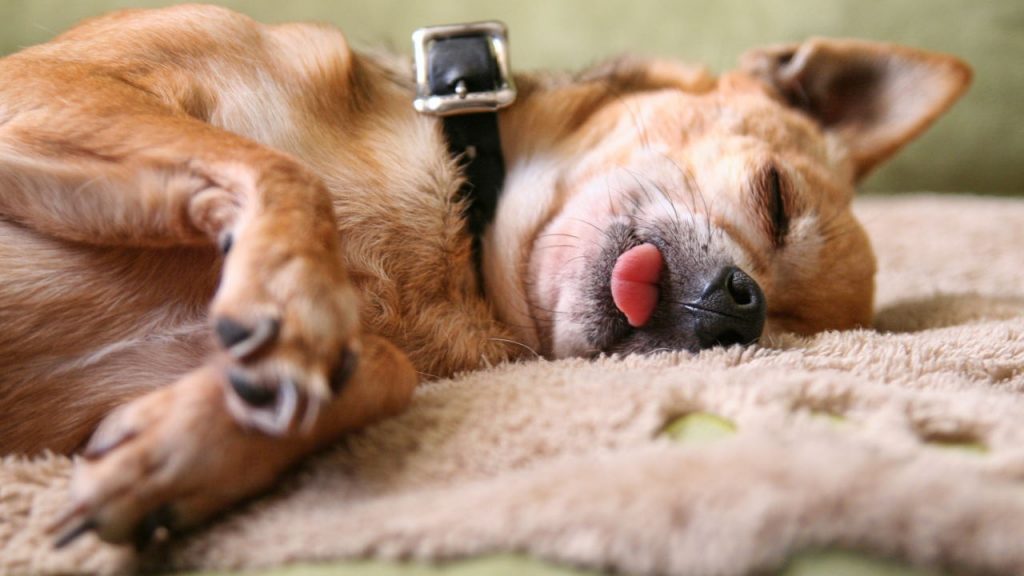Separation anxiety is a common issue faced by many dog owners, causing distress to both the pet and the owner. In order to tackle this problem head-on, it is crucial to recognize the signs of separation anxiety and understand its underlying causes. Only then can we implement effective strategies to relieve the anxiety and prevent it from happening in the first place. We will delve into the topic of separation anxiety, providing you with invaluable insights and practical tips to ensure a harmonious coexistence between you and your furry friend.
Recognizing The Signs Of Separation Anxiety
Separation anxiety in dogs can be a distressing experience for both the furry friend and their owners. It occurs when dogs become anxious or stressed when they are separated from their owners or left alone at home. This can lead to destructive behaviors, excessive barking, and even physical symptoms such as vomiting or diarrhea. As a responsible pet owner, it is crucial to recognize the signs of separation anxiety early on, so you can take the necessary steps to alleviate your dog’s distress.
One of the key signs that your dog may be suffering from separation anxiety is excessive barking or howling when you are not around. If your neighbors have complained about the constant noise coming from your house, it could be a red flag. In addition to excessive vocalization, your dog may also exhibit destructive behaviors such as chewing on furniture, scratching doors or walls, or digging up the garden. These behaviors are not out of spite; they are simply your dog’s way of coping with their anxiety.
Another telltale sign of separation anxiety is when your dog becomes overly attached to you and follows you around the house, even to the point of being unable to leave your side. They may become visibly anxious when you are about to leave the house, pacing, panting, or even trying to escape in an attempt to keep you from leaving. It is important to pay attention to these signs and address them promptly.
- Excessive barking or howling when left alone
- Destructive behaviors such as chewing or digging
- Becoming overly attached and anxious when you are about to leave
If you notice any of these signs in your dog, it is essential to consult with a veterinarian or a professional dog trainer. They can help you determine whether your dog is indeed suffering from separation anxiety and guide you in developing an appropriate treatment plan.
| Recognizing The Signs Of Separation Anxiety | Understanding The Causes Of Separation Anxiety | Effective Strategies For Relieving Separation Anxiety | Preventing Separation Anxiety In Dogs |
|---|---|---|---|
| Excessive barking or howling when left alone | Past traumatic experiences or changes in routine | Gradual desensitization and counterconditioning | Creating a safe and comfortable environment |
| Destructive behaviors such as chewing or digging | Lack of proper socialization or training | Using puzzle toys and interactive games | Slowly increasing time apart and practicing departures |
| Becoming overly attached and anxious when you are about to leave | Genetic predisposition or separation from mother too early | Establishing a consistent daily routine | Seeking professional help if needed |
By being aware of the signs of separation anxiety, you can take the necessary steps to address the issue and ensure your dog’s well-being. Remember, patience, understanding, and proper training can go a long way in helping your furry friend overcome their anxiety and lead a happier, more relaxed life.
Understanding The Causes Of Separation Anxiety
Separation anxiety is a common issue that many pet owners face, particularly dog owners. It can be a frustrating and distressing experience for both the dog and the owner. Understanding the causes of separation anxiety is crucial in order to effectively address and alleviate this problem. We will delve into the various factors that contribute to separation anxiety in dogs.
One of the key causes of separation anxiety in dogs is a lack of proper socialization from a young age. Socialization involves exposing puppies to various people, animals, and environments to help them develop a sense of confidence and adaptability. When dogs are not adequately socialized, they may become excessively dependent on their owners, leading to anxiety when left alone.
Another factor that can contribute to separation anxiety is a sudden change in routine. Dogs are creatures of habit and thrive on predictability. Any major disruption in their daily routine, such as a change in work schedule or a move to a new home, can trigger anxiety and distress when the owner is not present.
- Lack of mental stimulation is yet another cause of separation anxiety in dogs. Dogs are intelligent animals that require mental engagement and stimulation to keep them happy and balanced. When they are not provided with enough mental stimulation, they may resort to destructive behaviors as a way to cope with their anxiety.
- Past traumatic experiences can also contribute to separation anxiety in dogs. If a dog has experienced a traumatic event, such as being abandoned or mistreated in the past, they may develop a fear of being left alone. This fear can manifest as separation anxiety when the owner is not present.
- Overattachment to the owner is another common cause of separation anxiety. Dogs that are excessively reliant on their owners and have not been taught how to cope with being alone often exhibit symptoms of separation anxiety when left by themselves.
| Causes of Separation Anxiety: |
|---|
| Lack of socialization |
| Sudden change in routine |
| Lack of mental stimulation |
| Past traumatic experiences |
| Overattachment to the owner |
Effective Strategies For Relieving Separation Anxiety
Separation anxiety can be a challenging problem for many pet owners. The distress and anxiety experienced by dogs when left alone can lead to destructive behaviors, excessive barking, and even physical symptoms like vomiting or diarrhea. As a pet owner who wants the best for your furry friend, it’s important to find effective strategies for relieving separation anxiety. With a little patience and a lot of love, you can help your dog feel more secure when you’re not around.
One of the most effective strategies for relieving separation anxiety is creating a safe and comforting environment for your dog. This can be achieved through the use of crates or designated spaces where your dog feels secure. Providing your dog with a cozy bed, some familiar toys, and maybe even an article of clothing with your scent can help ease their anxiety when you’re away.
In addition to creating a safe space, it’s important to gradually desensitize your dog to being alone. Start by leaving them alone for short periods of time and gradually increase the duration. This will help your dog build confidence and trust that you will return. Engaging in play or exercise before leaving can also help tire out your dog and reduce anxiety.
- Another effective strategy for relieving separation anxiety is implementing a routine. Dogs thrive on routine and predictability, so establishing a consistent schedule can help them feel more secure. This includes regular meal times, exercise sessions, and even designated alone time. By incorporating these activities into your dog’s daily routine, they will be better equipped to handle periods of separation.
- Positive reinforcement training can also play a significant role in relieving separation anxiety. By rewarding your dog for calm and relaxed behaviors, you can help them associate being alone with positive experiences. This can be done through the use of treats, praise, and interactive toys that provide mental stimulation. Remember to be patient and consistent in your training approach, as it may take time for your dog to fully adjust.
| Strategies For Relieving Separation Anxiety: | |
|---|---|
| Create a safe and comforting environment | Implement a routine |
| Gradually desensitize your dog to being alone | Positive reinforcement training |
While these strategies can be effective in relieving separation anxiety, it’s important to remember that every dog is unique. What works for one dog may not work for another, so be open to trying different approaches and seeking professional help if needed. With time, patience, and a little bit of trial and error, you can help your dog overcome separation anxiety and ensure they feel safe and loved even when you’re not by their side.
Preventing Separation Anxiety In Dogs
Dogs are undeniably loyal and loving companions, but sometimes they struggle when left alone. Separation anxiety is a common issue among dogs, causing them distress and leading to destructive behaviors. However, the good news is that there are effective strategies to prevent separation anxiety in our furry friends. By understanding the root causes of this condition and implementing the right techniques, we can create a sense of security and ease for our beloved pets.
1. Establish a Consistent Routine
Consistency is key when it comes to preventing separation anxiety in dogs. Establishing a daily routine that your furry friend can rely on will help them feel more secure and less anxious. This routine should include regular feeding times, exercise sessions, and designated potty breaks. By creating a structured and predictable environment, you are reducing the chances of your dog becoming anxious when you leave.
2. Gradually Increase Alone Time
Leaving your dog alone for extended periods without proper preparation can trigger separation anxiety. To prevent this, it is essential to gradually accustom your dog to being alone. Start by leaving them alone for short periods and gradually increase the duration over time. This gradual exposure helps them build confidence and trust that you will return. Additionally, consider providing puzzle toys or treat-dispensing gadgets to keep them entertained while you’re away.
3. Provide a Safe and Comfortable Space
Creating a safe and comfortable space for your dog can greatly reduce separation anxiety. Designate a specific area in your home where your dog can feel secure when left alone, such as a cozy corner or a crate. Make sure to fill this space with familiar items, such as their favorite toys, blankets, or clothing that carries your scent. This will provide them with a sense of familiarity and reassurance during your absence.
4. Encourage Independence
Dogs with separation anxiety often become overly dependent on their owners. To prevent this, it is important to encourage independence and promote self-soothing behaviors. Avoid excessive attention and instead reward your dog for calm and independent behavior. Gradually increase the distance between you and your dog, allowing them to become comfortable with being alone in your presence before practicing alone time.
5. Seek Professional Help if Needed
If your dog’s separation anxiety persists despite your efforts, it may be necessary to seek professional help. A veterinarian or an animal behaviorist can provide valuable insight and guidance tailored to your dog’s specific needs. They may recommend behavior modification techniques, training programs, or even medications to alleviate your dog’s anxiety and help them lead a happier, more relaxed life.
Preventing separation anxiety in dogs requires patience, consistency, and understanding. By following these strategies, you can create a secure and stress-free environment for your furry friend, ensuring their well-being even when you’re not around. Remember, a happy and content dog makes for an even happier pet parent!








